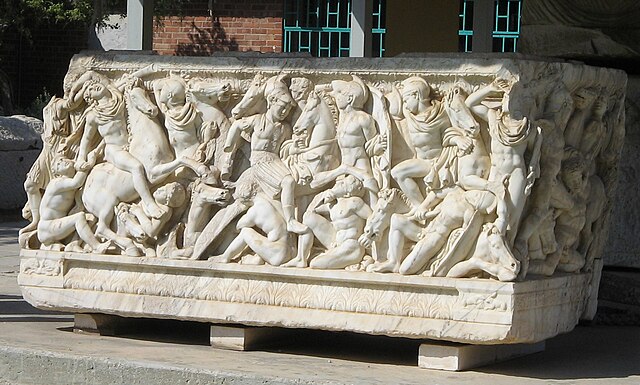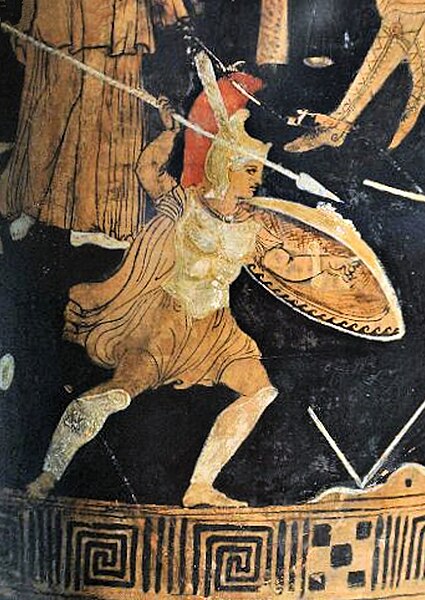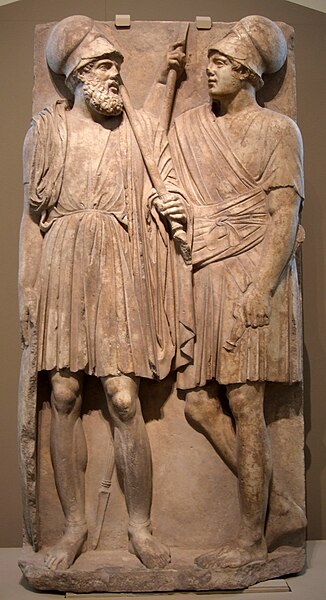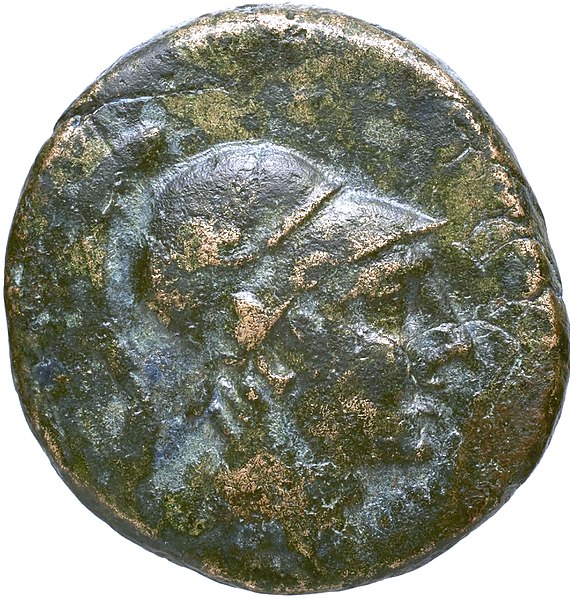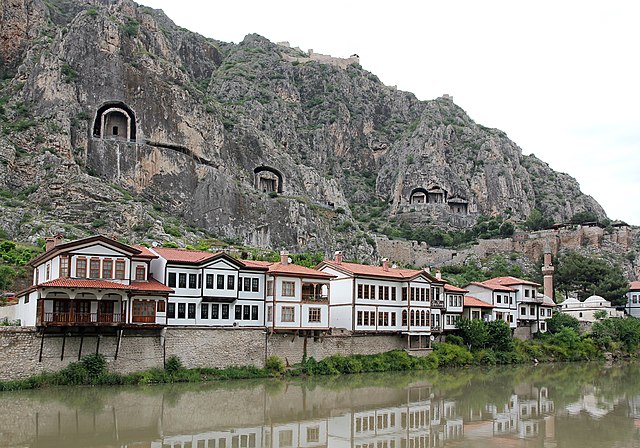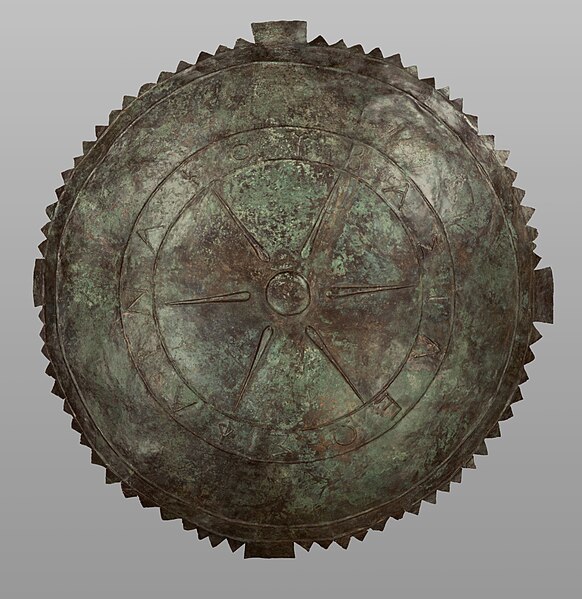The Hellenistic armies is a term which refers to the various armies of the successor kingdoms to the Hellenistic period, emerging soon after the death of Alexander the Great in 323 BCE, when the Macedonian empire was split between his successors, known as the Diadochi.
Hellenistic soldiers in a relief of a sarcophagus from Ashkelon, Israel
Greek soldier in combat, c. 300 BC (Depiction of Achilles).
Stele with two Hellenistic soldiers of the Bosporan Kingdom; from Taman peninsula (Yubileynoe), southern Russia, 3rd quarter of the 4th century BC; marble, Pushkin Museum.
Ancient Macedonian paintings of Hellenistic-era military armor, arms, and gear from the Tomb of Lyson and Kallikles in ancient Mieza (modern-day Lefkadia), Imathia, Central Macedonia, Greece, dated 2nd century BC.
Pontus was a Hellenistic kingdom centered in the historical region of Pontus in modern-day Turkey, and ruled by the Mithridatic dynasty of Persian origin, which possibly may have been directly related to Darius the Great of the Achaemenid dynasty. The kingdom was proclaimed by Mithridates I in 281 BC and lasted until its conquest by the Roman Republic in 63 BC. The Kingdom of Pontus reached its largest extent under Mithridates VI the Great, who conquered Colchis, Cappadocia, Bithynia, the Greek colonies of the Tauric Chersonesos, and for a brief time the Roman province of Asia. After a long struggle with Rome in the Mithridatic Wars, Pontus was defeated.
Coin of Pont Amisos
The Pontic Alps which divided the kingdom.
Ancient Pontic tombs on the mountains of Amasya
Bronze shield in the name of King Pharnakes: ΦΑΡΝΑΚΟΥ ΒΑΣΙΛΕΩΣ, Getty Villa (80.AC.60)

